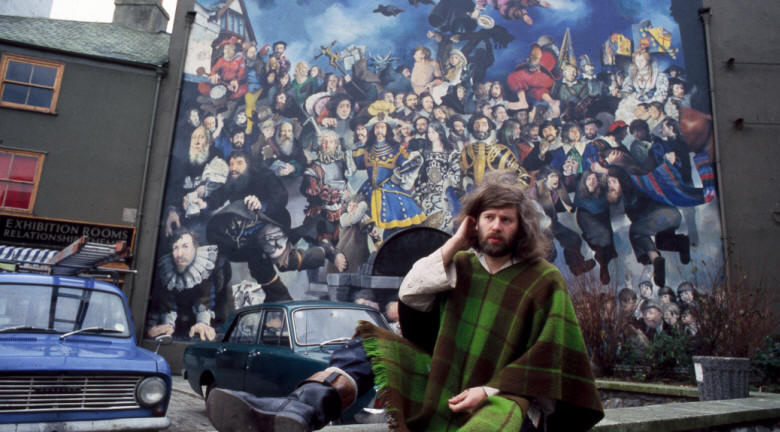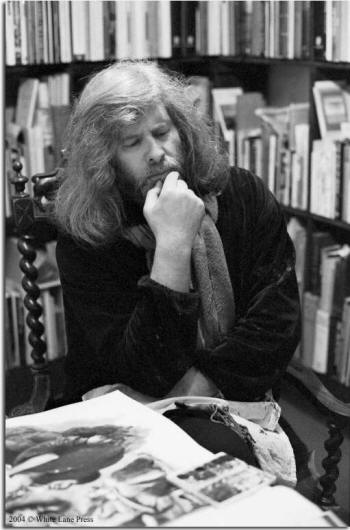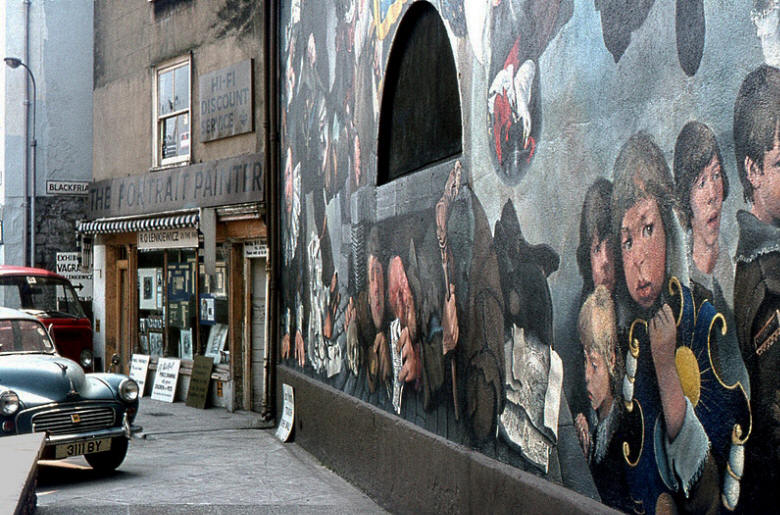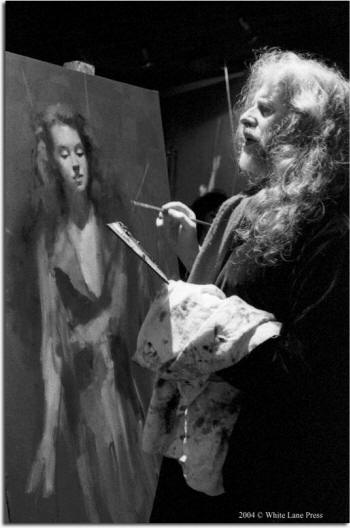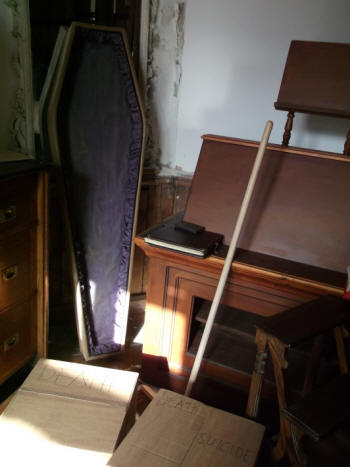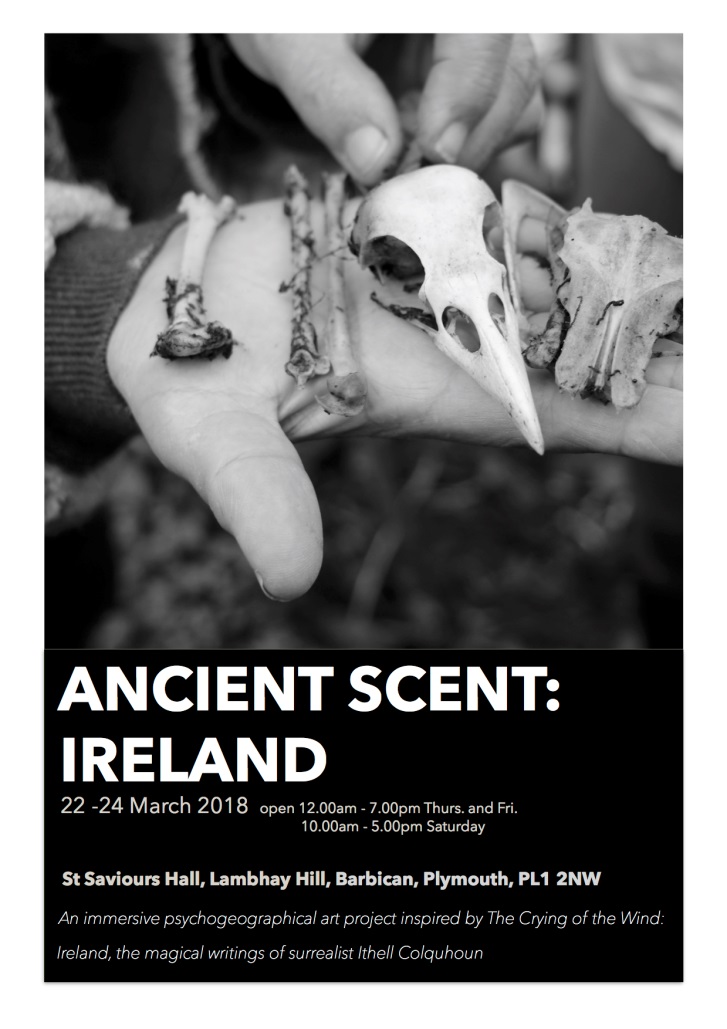|
|
| home | exhibitions | interviews | features | profiles | webprojects | archive |
|
Robert Lenkiewicz, Ithell Colquhoun, 'Ancient Scent' and an alchemical experiment! Steve Patterson
We self-consciously worked through the Surrealist techniques outlined in Ithell Colquhoun’s essay 'The Mantic Stain' and immersed ourselves in the landscape in and around Lamorna valley. Our guiding principles were the three-fold pillars of ART, MAGIC and the LANDSCAPE. Alchemy, like art, is not just concerned with producing a finished product; it is an act of transformation, both in the part of the practitioner and the world around them. Whilst living in Lamorna Ithell Colquhoun wrote the part-travelogue, part-psychogeographical ramble around Cornwall, 'The Living Stones', (1957) and this provided the inspiration for much of our work. Previously to this, however, she had written a similar work based in Ireland: 'The Crying of the Wind' (1955). After our Lamorna adventure the logical conclusion, therefore, seemed to be to venture into Ireland. Luck seemed to fall upon us. Throughout the experiment we came to recognise what we called 'The Hand of Ithell', that is to say - an unseen influence that seemed to throw peculiar synchronicities our way. In the spring of 2017 we were offered a fully funded residency near Dublin to explore our work, which also coincided with the 'As Above - So Below' exhibition in Dublin, which featured a number of Ithell Colquhoun’s works. Just as we were about to set off, and just as suddenly as it had emerged, with no explanation the funding was cut, the residency withdrawn and the Dublin exhibition postponed. We were left high and dry.
Not to be put off we decided to formulate our own unfunded, spontaneous residency. Penny and Lally Macbeth searched high and low until they found a very reasonably priced old rambling manor house with no bookings bang in the centre of Ireland. It seemed to be too good to be true. On our arrival we found the house somewhat akin to the 'House of Usher' in the heart of the bog country, and possibly also the most haunted place I have ever encountered! From here we explored the landscape around us: the dark corridors of Ballycumber House and the even darker corridors of our arte! Thus was born the second stage of the 'Ancient Scent project - Ireland'. The culmination of which is an exhibition in Robert Lenkiewicz's old library, St Saviour's on the Hoe, Plymouth. Thus begins the second part of this tale. For many who lived in Plymouth, Robert Lenkiewicz (1942-2002 - picture above) was a familiar sight around town, and in many ways he was a larger than life character. The art world had an awkward relationship with him; some considered his work to be kitsch or even exploitative, but I think these accusations were unfounded. In many ways he was a product of another age; I would imagine he would have been quite at home in medieval Florence. He was an incredible portrait painter who dealt with challenging themes such as sex, death and homelessness. Quite simply, I don’t think the art world quite knew what to do with him!
Rumours about him abounded. Some of them I expect were true! Once he walked up to a friend of mine whilst she was out with her boyfriend and openly made a pass at her. Somewhat taken aback she replied that he couldn’t say that - she was with her boyfriend - to which he cryptically replied: 'you will tire of him and come to me,' and disappeared into the day. In 1981 he famously faked his own death. There were also rumours of him keeping the embalmed body of his old friend Diogenes in his studio: after his own death this was found to be true. He had an open door policy to the poor and homeless, but I always found his studio to be closed and forbidding. In those days it was difficult to see anyone’s work outside galleries and exhibitions. All one could see were tant-alizing glimpses of his work in great half-open oversized tomes in his studio window. In the mid-1980's he opened the mural on the outside wall of his studio entitled 'The Last Judgment' (pictures above and below). Sadly only fragments of it seem to now remain. Many of the subjects in the painting were said to be his offspring; legitimate and otherwise. With its opening he circulated a typed and photocopied commentary on the work. It was a philosophical tract on the nature of death, drawn from the work of the great medieval theologians and natural philosophers. It was a work rich in magical and hermetic thought. He quotes Pico De Mirandola: 'God and the night are one'. I was to encounter him again just over a decade later, shortly before his untimely passing. At the time I was involved with the Museum of Witchcraft in Boscastle, where two Lenkiewicz paintings are to be seen to this day. Both have an eerie quality to them and are untitled and undated. (One depicts what looks like to formation of a spirit familiar in some kind of alchemical vessel; the other is of some kind of ritual in a large panelled room with a beast-masked magister character standing at the door). Graham King had taken over the museum in 1995, and in 1999 he was contacted by Lenkiewicz who had acquired some of Cecil Williamson’s artefacts, including the skeleton of the witch Ursula Kemp. He (Lenkiewicz) felt that something was not quite right.
Lenkiewicz had known Cecil Williamson for some years. The two men found common ground in their shared interest in the occult, but by 1999, Williamson had suffered a stroke and was in a nursing home in mid-Devon. It transpired that whilst he was incapacitated his daughters had been selling off what remained of his museum collection (including the skeleton) without his knowledge. King and Lenkiewicz had to get their heads together to try and unravel who owned what! During this time Lenkiewicz and King visited Williamson in the nursing home, and Lenkiewicz painted a portrait of him shortly before he passed away. Whilst the negotiations were in progress, I was trying to sort out another conundrum. I had inherited an old medieval alchemical manuscript. I could not provide the conditions it needed to survive and it was beginning to fall apart. Graham King suggested that I offer it to Lenkiewicz. The painter claimed to have the largest library of pornography in the world, and the second largest occult library in the world next to the Vatican. I never saw the former (I have no idea as to whether it actually existed) but I was privileged to see the latter. To cut a long story short, Graham King took it to the studio to see if he was interested, and on King's next visit I accompanied him there.
Before I arrived I asked Graham King what Lenkiewicz was like as a person. Graham replied that he was like Jesus. This was a somewhat surprising analogy, as neither of us could be described as gushy or of that kind of religious inclination, but when I met the man I think I knew what he meant. Lenkiewicz had an ageless quality about him, he could have been anywhere between 40 and 80. This ageless quality was something that was often attributed to the alchemists of old. His eyes seemed to emanate a kind of steady, benevolent spiritual knowing. Graham King had asked him on a previous occasion what his interest in Magic actually was. Lenkiewicz replied that he had an 'active interest in metaphysics'. On its own this sounds a curious turn of phrase. In a tract Lenkiewicz wrote on the C18 quasi-alchemical text 'Aurea Catena Homei', he comments on the fact that one of the functions of alchemy was to use physical phenomena to demonstrate metaphysical principles. The Surrealists were aware of this. Roger Gilbert-Lecomte commented that 'clairvoyance is an experiment in metaphysics'. Hoping that he may elucidate this point I asked him myself what his interest was in the world of magic, to which he replied that he had an interest in obsessive behaviour. As to whether he was fobbing me off or hinting at another mystery I shall never know. Lenkiewicz told me he had had the manuscript valued at Sotheby's. It was missing several pages and had been recovered, so he was only able to offer me £1000, which is a considerable sum now but in the 1990’s was quite extraordinary. I accepted the offer and he pulled a roll of £20 notes in an old window envelope out his back pocket and the deal was done. In a kind of alchemical exchange, the money actually allowed me to set up as a self-employed woodcarver. The 'Olde Artes' can manifest in surprising ways!
Lenkiewicz knew he had heart problems and his days were numbered. He said he had made provision for his libraries and they were safe in the hands of a trust. When he passed away he famously had no bank account and only £12 in his estate. A choice had to be made between his paintings and his books. As he was primarily an artist his books had to go, and the whole occult library was split up and auctioned off in to private collections. Such is the fate of many a collection. Whatever provision its creator says they put in place, when they go the collection only exists as long as it is valued and there is someone there to actively maintain it. About the same time that the Lenkiewicz library was sold off, the 'Potter's Museum' at Jamaica Inn on Bodmin Moor suffered the same fate. We left the studio on the Barbican and walked a short distance towards the Hoe to his other library at St Saviour's. This was an impressive looking granite fronted ecclesiastical looking building. Even then it was looking like it had passed its heyday; it had a gothic edge to it. Inside it could not be more different to his occult library. It was a large airy space with rows of hardwood shelved reaching to the high ceiling, and like the occult library, this too seemed to be well used. As far as I could gather, this is where he housed his books on art, and his philosophical works. High on one of the library shelves perched the skeleton of the witch Ursula Kemp, surveying the scene below. Recently, 20 years on, I returned to
Lenkiewicz’s world. The studio now looks closed and unused and the two
murals front and back, all but gone. St Saviour's, meanwhile, is empty
and derelict. The library shelves are still there, but they're empty,
and boxes of books and the contents of the old library lie strewn
around. But, propped up in a corner, in a pile of boxes, still lies the
empty coffin of Ursula Kemp (picture above right). published 10/3/18
|
|
|

